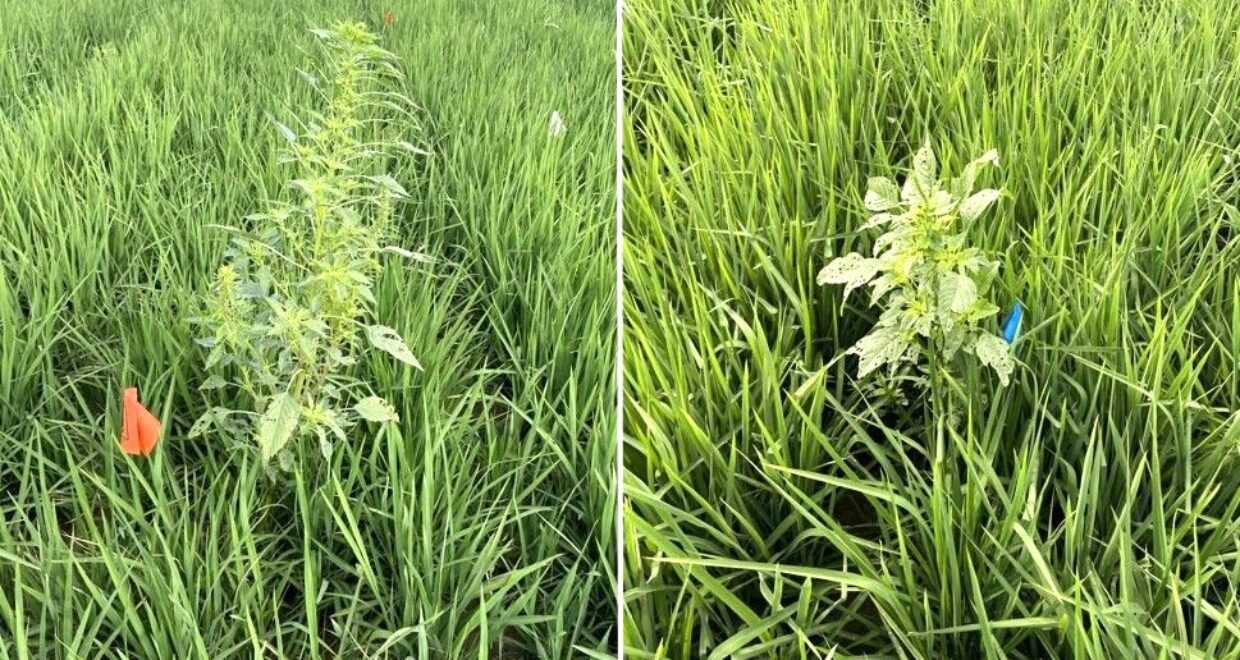No Palmer Amaranth Tolerance is Advisable in Furrow-irrigated Rice
A recently published article in the journal Weed Science shows that successful, in-furrow rice production greatly hinges on Palmer amaranth (Amaranthus palmeri) weed pressure – before, during and after the growing season.
“Palmer amaranth that emerged one week before the crop caused the greatest yield reduction in the study, with grain yield loss of 50% where rice was within about 15 inches, from the weed,” says Tanner King, weed science Ph.D. student at Mississippi State University, Weed Science Society of America (WSSA) member scientist, and corresponding author for the study. “Yet, even a single Palmer amaranth plant emerging within three to four weeks after rice emergence still has the potential to negatively impact rice growing within about 13 square feet.”
King and his team conducted their research during 2022 and 2023 at the Milo J. Shult Agriculture Research and Extension Center in Fayetteville, Arkansas. “Based on the Palmer amaranth seed production data from our study, female Palmer amaranth plants that emerge three to four weeks after rice can still successfully contribute offspring to the soil seedbank,” he says. “As a result, producers must focus on minimizing returns to the soil seedbank, which will subsequently help mitigate the additional emergence of Palmer amaranth seedlings in future growing seasons.”
Season-long Palmer amaranth weed control is no easy task, but the rewards from a ‘zero tolerance’ approach to the weed during in-furrow-irrigated rice production are justifiable. “Preventing Palmer amaranth from reaching reproductive maturity will require a combination of control measures throughout the growing season, including the use of residual preemergence herbicides,” says King. “Although not assessed in this study, the monetary losses associated with Palmer amaranth interference in furrow-irrigated rice are exacerbated when harvest efficiency and quality are negatively impacted and the economic impact of Palmer amaranth escapes in rice will extend well beyond the year in which plants are allowed to compete and produce seed.”
More information about the study is available in the article, “Effect of Palmer amaranth (Amaranthus palmeri) Time of Emergence on Furrow Irrigated Rice Yields and Weed Seed Production.” The research article is among other first-quarter 2025 research articles featured in Weed Science, a Weed Science Society of America journal, published online by Cambridge University Press. King can be contacted about the study at tak196@msstate.edu or 901-832-0031.
About Weed Science
Weed Science is a journal of the Weed Science Society of America, a nonprofit scientific society focused on weeds and their impact on the environment. The publication presents peer-reviewed original research related to all aspects of weed science, including the biology, ecology, physiology, management and control of weeds. To learn more, visit www.wssa.net.






